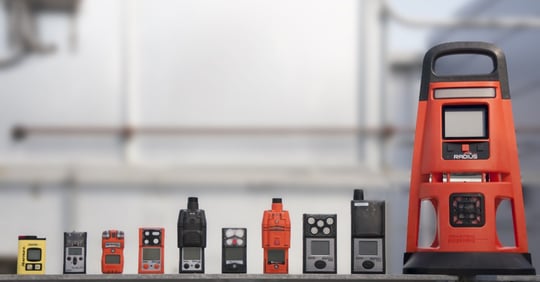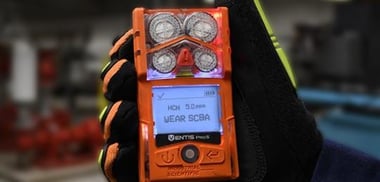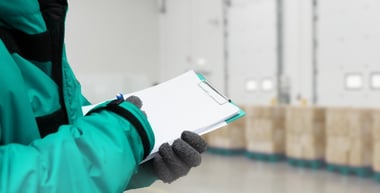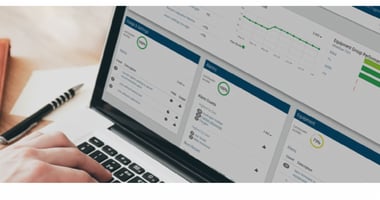When it comes to keeping your team safe on the job, do you know that your portable multi-gas detectors will perform when it matters most? With so many options available, choosing the right equipment to meet your team’s needs can feel overwhelming.
Proper training and the right tools are critical. In potentially hazardous environments, workers need to understand the risks and trust their gas detectors to alert them to danger. Selecting monitors designed to detect only the gases present in your specific application can reduce confusion and ensure timely evacuation during an emergency.
Your team’s safety and productivity depend on having the right portable multi-gas detectors in place. Don’t waste time—find the best detectors to protect your people and help them get the job done efficiently and safely.
Understanding Single and Multi-Gas Monitors
Companies will often use different gas detectors for different teams: temporary contractors are using single-gas monitors, full-time employees are using multi-gas monitors, and specialty teams are using more advanced gas monitors. With so many options, it can be difficult to know that your people are using the best equipment for the job. It’s important to know that different gas monitors provide different features, and some monitors may be more useful for your application than others.
To find the right monitors for your teams, you first need to understand the operational differences among gas detectors. A situation can become dangerous if you use the wrong gas monitor.
The features people look for in gas monitors can fluctuate with changes in business. Bigger refineries with hundreds of employees are often focused on hydrogen sulfide and may seek out single-gas monitors to detect it. But when a problem arises—carbon monoxide exposure, oxygen deficiency, or a similar issue—the needs change. As the safety culture changes within your company or industry, you may need to use different gas monitors.

Among current gas monitors available, the Ventis® MX4 personal multi-gas monitor is one of the most popular. This four-gas monitor has the portability and size of a single-gas monitor. It’s lightweight but rugged. It eliminates the need for two monitors because you can use it for personal monitoring and with a slide-on pump for confined space sampling.
In more specialized health and safety teams, advanced monitoring comes into play, when circumstances become more complex. In a confined space situation, for instance, many questions arise on the topic of safety: Are you only worried about specific gases, or is there an unknown element to contend with? Is there a sensor that’s picking up something crazy? Can you reliably send your people into this situation with a standard four-gas monitor and know that that’s all they’ll have to worry about?
Advanced monitoring may not be relevant on a daily basis, but it is the first check in a series of safety protocols and it remains crucial. Advanced monitoring expects the unexpected, so your workers aren’t caught in a suddenly dangerous situation.
In less complex scenarios, single-gas monitors like the GasBadge® Pro may get the job done. This full-featured gas detector comes with interchangeable sensors, allowing the GasBadge Pro to monitor levels of many toxic gases. This classic gas monitor is popular in situations where you only need to detect one gas but need the option to rotate the sensors.
Selecting the Appropriate Gas Monitors for Your Tasks
On a basic level, many sensors are the same among gas detectors: the sensor technology in the standard Ventis® MX4 is the same as in the Ventis® Pro5 and in the MX6 iBrid®, however, it’s often easier to separate monitors not by sensor technology, but by their additional safety features. For instance, features of the Ventis Pro5 include alarm sharing, compatibility with work alone devices, man down functionality, and more.
The Ventis MX4, a basic four-gas monitor, has similar sensor capabilities to the Ventis Pro5, but no connected worker capabilities. Both devices can detect multiple gases simultaneously and are compatible with the DSX™ Docking Station and iNet® Exchange, but only the Pro includes a man-down alarm and panic button, gas alerts, a customized message feature, wi-fi connectivity and LENS® Wireless technology capability. Additionally, the Pro can detect five gases where the MX4 can detect up to four.
The MX6 iBrid® six-gas monitor has sensor advantages. It can offer different and more sensor options, but you lose the connected worker benefits. When you want advanced features that make the monitor easy to use, the Ventis Pro5 has the edge.
Connectivity and Advanced Monitoring
When you’re on the job, it’s crucial to stay in contact with your team, whether in-person or remotely. Connectivity is key when you need to share crucial information in real time.
Newer connected personal monitors and area monitors can share gas readings and alarms to enable in-person, team-based safety. Two workers using connected gas detectors can create a localized peer safety group. When the alarm goes off on one worker, an alert goes off for the other worker. Connected gas detectors can also relay hazard information into the cloud in real time, allowing safety managers to see alerts and data information as it happens.
In order to benefit from these connectivity features, you don’t have to be in a certain industry. Typically, bigger chemical plants, refineries, and even fire departments incorporate connectivity into their safety programs, but other industries can benefit too. It’s the next step: everyone wants to have it, but you need to make sure that connectivity will benefit your company and your people.
When you rely on gas detection equipment to complete daily tasks, you need to be certain that the monitor you are using is going to keep you safe on the job. Hazards vary from industry to industry, but safety should remain consistent. You need the right equipment, and the choice is an important one to make: it ultimately comes down to finding the right set of features in a gas detector that will best serve your needs and keep you safe.
Contact an expert at Industrial Scientific to learn more.



